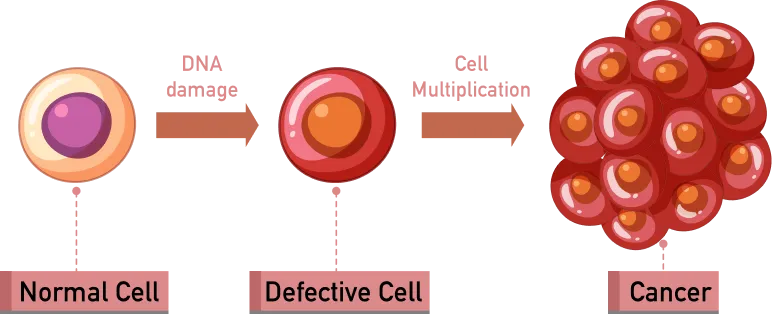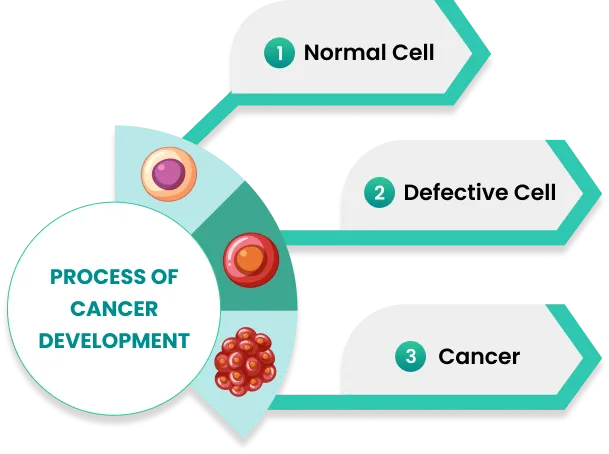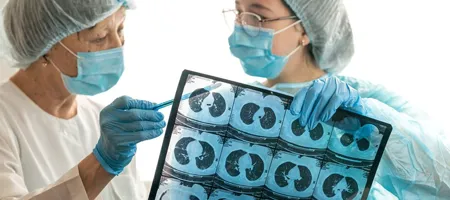- Email: [email protected]
- Contact: +1 (407)581-9000
Understanding Cancer
CancerGuru
Understanding Cancer

What is Cancer?
Cancer is a complex and widespread disease, impacting millions globally, and understanding its progression is vital for patients, families, and caregivers accessing CancerGuru.com. This pervasive condition emerges through a sequence of cellular changes, beginning with healthy cells and culminating in malignancy. Below, we delineate this process into three distinct steps—Normal Cell, Defective Cell, and Cancer—based on insights from the American Cancer Society (ACS) and National Cancer Institute (NCI), illuminating the journey from normalcy to uncontrolled growth.

Process of Cancer Development


The foundation of cancer lies in the body’s healthy, normal cells, which function under precise regulation. According to the NCI, these cells grow, divide, and die in an orderly manner dictated by their DNA, the genetic blueprint governing cellular behavior (NCI, 2023). For example, a normal skin cell replicates to replace dead cells, halting division once the need is met, a process called homeostasis. The ACS explains that trillions of such cells—each with 23 chromosome pairs—operate harmoniously, repairing damage from daily wear or environmental factors like UV exposure. At this stage, no abnormalities disrupt their lifecycle; they embody the body’s baseline health, unaware of the potential shifts ahead.
The transition to a defective cell marks the onset of cancer’s development, triggered by genetic mutations. The NCI identifies that alterations in DNA—whether inherited, spontaneous, or induced by carcinogens like tobacco smoke—disrupt normal cell division and repair mechanisms (NCI, 2024). A single mutation, such as in the TP53 gene, might disable a cell’s ability to self-destruct (apoptosis), allowing it to persist abnormally. For instance, a lung cell exposed to years of smoking could accumulate damage, evading checkpoints that halt replication. The ACS notes that these defective cells may form benign tumors—non-cancerous growths like lipomas—that remain localized and harmless. However, further mutations set the stage for malignancy, distinguishing this step as a critical pivot from order to chaos.
Cancer fully emerges when defective cells evolve into malignant entities, characterized by uncontrolled growth and invasive potential. The ACS defines this phase as the formation of malignant tumors, driven by multiple genetic changes that override all regulatory systems (ACS, 2023). These cells divide relentlessly, forming masses that can invade nearby tissues—e.g., a breast cancer tumor breaching ductal boundaries—or spread distantly via metastasis, such as to the liver or lungs. A 2024 NCI study estimates that metastasis accounts for 90% of cancer deaths, as rogue cells travel through blood or lymph systems. Unlike benign growths, malignant tumors disrupt organ function, with a colorectal cancer mass, for example, obstructing digestion. This step encapsulates cancer’s complexity, affecting millions and underscoring the urgency of early detection and intervention.

Nature of Cancer
In the United States, cancer’s prevalence is staggering. The ACS (American Cancer Society) estimates that in 2023, approximately 1.9 million new cases were diagnosed, meaning roughly 1 in 3 individuals will face a cancer diagnosis in their lifetime. This underscores the importance of understanding cancer’s nature for our audience. The disease manifests in over 100 distinct types, from breast and lung cancer to less common forms like sarcomas, each with unique behaviors and treatment needs. For instance, a patient diagnosed with early-stage melanoma might notice a changing mole, prompting a visit to our website for clarity on next steps.

How to Detect Cancer
Early detection remains a cornerstone of managing cancer effectively. We advise you to immediately recognize warning signs—such as unexplained weight loss, persistent fatigue, or unusual lumps. Earlier intervention can significantly improve outcomes. Cancers detected at localized stages have a 5-year survival rate exceeding 90% for many types, compared to under 30% when metastatic (American Cancer Society, “Cancer Statistics Center”). Education is key: understanding how cancer develops—whether through inherited genetic risks or lifestyle factors like smoking—helps demystify the disease.

Vital Cancer Info & Resources
We serve as a vital resource in this journey, offering insights into cancer’s biological underpinnings. While normal cells follow a lifecycle of growth, division, and death, cancer cells ignore these rules, often evading the body’s immune defenses. We have the means to equip our visitors and patients who form our community to engage with healthcare providers, ask informed questions, and pursue timely screenings, fostering a proactive approach to cancer care.

